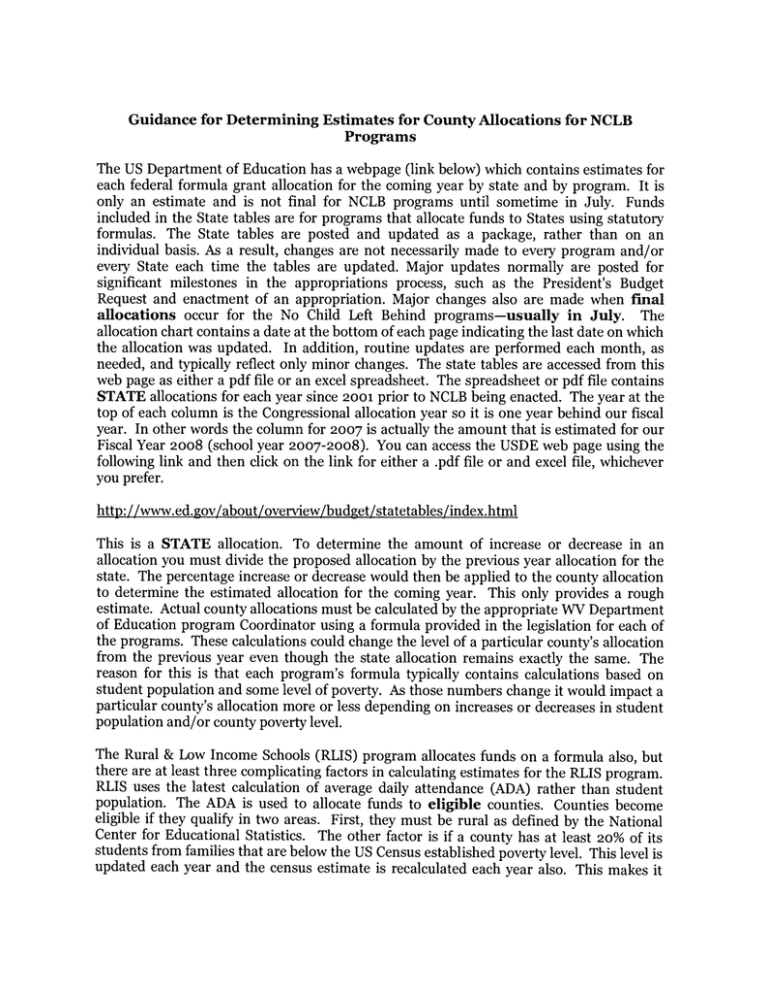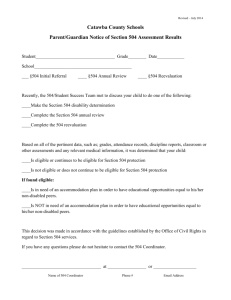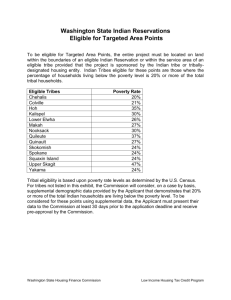Guidance for Determining Estimates for County Allocations for NCLB Programs
advertisement

Guidance for Determining Estimates for County Allocations for NCLB Programs The US Department of Education has a webpage (link below) which contains estimates for each federal formula grant allocation for the coming year by state and by program. It is only an estimate and is not final for NCLB programs until sometime in July. Funds included in the State tables are for programs that allocate funds to States using statutory formulas. The State tables are posted and updated as a package, rather than on an individual basis. As a result, changes are not necessarily made to every program and/ or every State each time the tables are updated. Major updates normally are posted for significant milestones in the appropriations process, such as the President's Budget Request and enactment of an appropriation. Major changes also are made when final allocations occur for the No Child Left Behind programs-usually in July. The allocation chart contains a date at the bottom of each page indicating the last date on which the allocation was updated. In addition, routine updates are performed each month, as needed, and typically reflect only minor changes. The state tables are accessed from this web page as either a pdf file or an excel spreadsheet. The spreadsheet or pdf file contains STATE allocations for each year since 2001 prior to NCLB being enacted. The year at the top of each column is the Congressional allocation year so it is one year behind our fiscal year. In other words the column for 2007 is actually the amount that is estimated for our Fiscal Year 2008 (school year 2007-2008). You can access the USDE web page using the following link and then click on the link for either a .pdf file or and excel file, whichever you prefer. http://www.ed.gov/about/ overview /budget/statetables/index.html This is a STATE allocation. To determine the amount of increase or decrease in an allocation you must divide the proposed allocation by the previous year allocation for the state. The percentage increase or decrease would then be applied to the county allocation to determine the estimated allocation for the coming year. This only provides a rough estimate. Actual county allocations must be calculated by the appropriate WV Department of Education program Coordinator using a formula provided in the legislation for each of the programs. These calculations could change the level of a particular county's allocation from the previous year even though the state allocation remains exactly the same. The reason for this is that each program's formula typically contains calculations based on student population and some level of poverty. As those numbers change it would impact a particular county's allocation more or less depending on increases or decreases in student population and/ or county poverty level. The Rural & Low Income Schools (RLIS) program allocates funds on a formula also, but there are at least three complicating factors in calculating estimates for the RLIS program. RLIS uses the latest calculation of average daily attendance (ADA) rather than student population. The ADA is used to allocate funds to eligible counties. Counties become eligible if they qualify in two areas. First, they must be rural as defined by the National Center for Educational Statistics. The other factor is if a county has at least 20% of its students from families that are below the US Census established poverty level. This level is updated each year and the census estimate is recalculated each year also. This makes it impossible to determine for sure if a particular county is eligible. An example from FY 07 is Grant County. Grant County was above the 20% level required to be eligible. Grant County was eligible 3 of the 5 fiscal years from FY 2003 trough 2007. Additionally, in the previous year the range of poverty in all 55 counties was from a low of 1i.69 in Putnam to a high of 47.62 in McDowell. Grant County had 20.09% of its students from families below the US Census poverty line. Additionally, there were no counties that were closer to the 20% level than Grant. Therefore, if the poverty line were to go up only a very little, or if only a few families in Grant County became more prosperous during the year then Grant County would not be eligible for RLIS funds. If those figures went only a little the other way then Tucker County (19.75 % that year) might become eligible. Since the inception of RLIS in FY 2003 the number of eligible counties has had a range of 10 with a low of 26 eligible counties in FY 05 and a high of 36 eligible counties in FY 03 and FY 04. This fluctuation in the number of eligible counties also affects the amount of funds the remaining eligible counties receive. The calculation of eligible school districts is happening in all states and territories that receive US Department of Education allocations. The average daily attendance from all of these districts is divided into the Congressional allocation to determine a per student amount, then multiplied by each particular state ADA to determine the state allocation. This formula is repeated at the state level to determine county allocations. The step of having to determine eligible counties for the whole nation each year is the extra step which delays the RLIS allocation.



